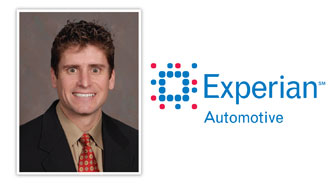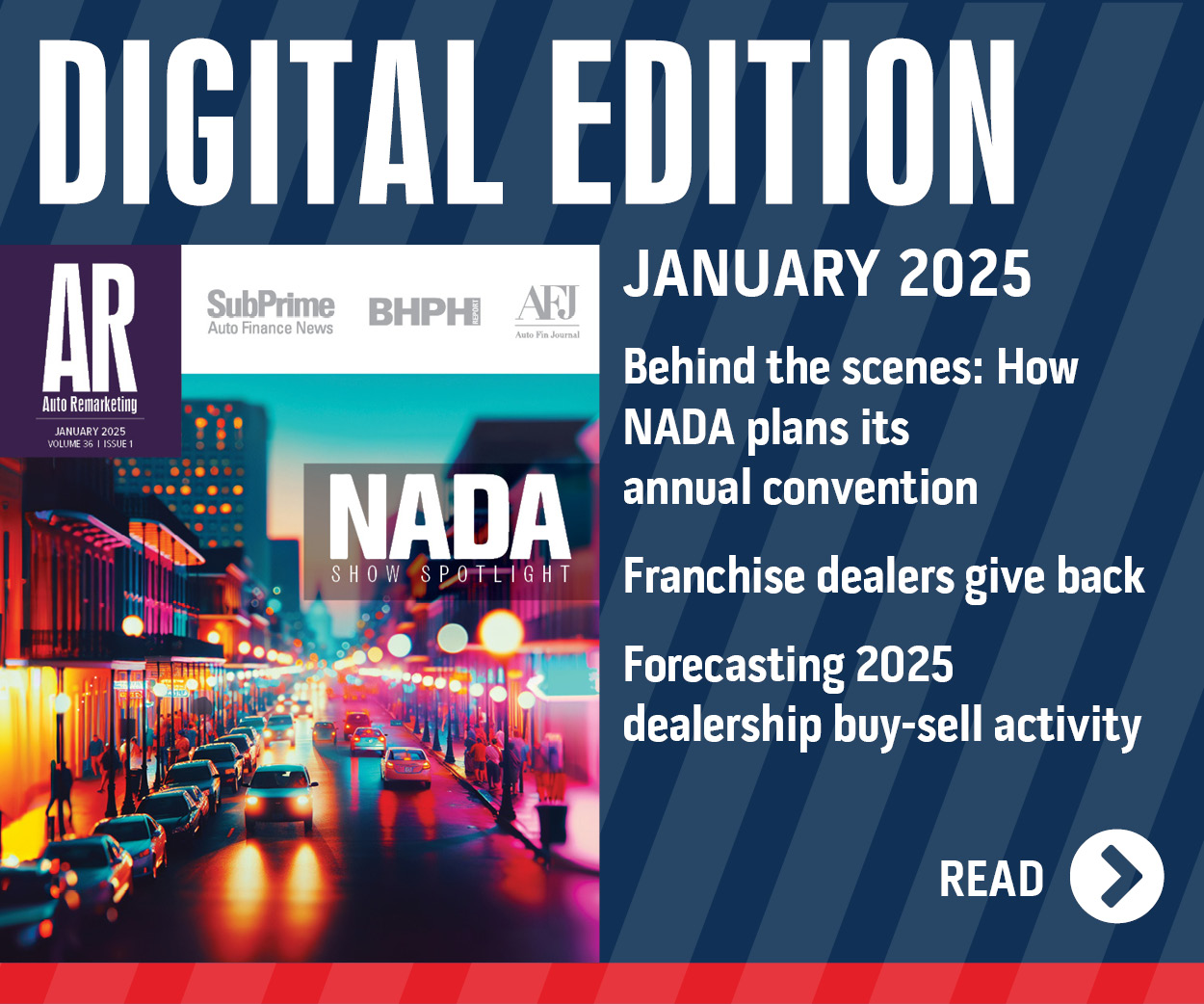Experian Highlights Hyundai’s 2Q Surge, Offers More Specifics on Tsunami Market Impact

While explaining how Hyundai Motor Group topped the industry in corporate loyalty for the first time, Experian Automotive revealed more data that showed the depth of the impact the Japan earthquake and tsunami had on second-quarter new-vehicle market trends.
During a Webinar this week, Experian director of consulting and analytics Jeffrey Anderson made noteworthy contrasts in new-vehicle registrations between the second quarter of this year and last year. Two automakers affected most by March’s natural disasters — Toyota and Honda — watched their registration levels drop by 17.6 percent and 7.7 percent, respectively.
To be exact, Anderson pinpointed that Toyota’s new-registration total dropped by 81,427 units year-over-year. Honda’s decline totaled 25,467 units.
And the specific units that created the supply quandary for Toyota and Honda actually were several models primarily assembled in the U.S.
Anderson indicated registrations from Toyota Camry and Corolla were off by 31,900 units during the second quarter. He said Honda’s Civic and Accord also dropped considerably.
“It’s really key when you think about all this because most those vehicles are manufactured in the U.S,” Anderson told Webinar attendees.
“Toyota’s building nearly 300,000 Camrys here. Honda Accord, there are hundreds of thousands made here. According to the government, they’re 80 percent domestic content,” he continued.
“It really brings to clarity how critical it is in terms of a supplier base. If you have one supplier that gets impacted, it can impact plants around the globe,” Anderson went on to say. “This is probably going to be a lesson that’s going to have an impact across the supplier base, how to diversify and ensure that if one plant gets impacted, production can be quickly switched and parts can be produced at another facility.”
Hyundai’s Positive Charge
Filling the second-quarter gap was Hyundai, which according to Experian’s data, made a 23.7-percent year-over-year climb in new registrations during the second quarter. That improvement calculated into 60,597 units.
The registration gain in part was propelled by corporate loyalty Hyundai is creating.
Experian discovered Hyundai’s corporate loyalty rate of 49.6 percent edged General Motors and Ford out of the top spots with ratings of 48.1 percent and 47.6 percent, respectively. Anderson added Hyundai’s corporate loyalty was bolstered by strong performances by both Kia, which had the highest brand loyalty ranking (47.9 percent), and Hyundai, which finished with the fourth highest brand loyalty (40.5 percent).
“According to our latest market report, Hyundai Motor Group has been making strides in customer loyalty for several years,” Anderson explained.
“In North America, both Kia and Hyundai have made improvements in vehicle styling and quality among both brands. This has clearly helped them gain and maintain a strong and loyal customer base,” he continued.
Anderson shed more light on why Hyundai’s latest market standing is all the more noteworthy.
“Playing in just 10 vehicle segments, Hyundai is able to achieve highest corporate loyalty,” Anderson pointed out. “This includes Hyundai owners who returned to market and say they have a requirement where they have to tow a big boat so they need a big SUV and buy a Chevy Tahoe or they need a big truck and they buy a Ford F-150. Hyundai’s losing customers to segments they don’t participate in and yet are able to retain almost 50 percent of those customers.
“It’s a very focused vehicle line and focused customers who are not moving to some of those other segments in greater degrees,” he added.
Hyundai’s loyalty is also impacting its overall position in the market. The latest Experian data showed that Hyundai continued to pick up market share with the greatest percentage increase year to date, jumping from 7.9 percent in the second quarter of last year to 9.2 percent in the second quarter of this year.
Other year-over-year market share gains came from GM (up 0.5 percent from 19.1 percent to 19.6 percent), Chrysler (up 0.3 percent from 9.4 percent to 9.7 percent) and Nissan, (up 0.2 percent from 7.9 percent to 8.1 percent).
Meanwhile, Toyota’s market share slipped 2.1 percent year-over-year from 15.4 percent to 13.3 percent, and Honda’s share dipped 0.8 percent from 10.7 percent to 9.9 percent.
Returning to touch upon the earthquake and tsunami impact, Anderson tied together the drop in corporate loyalty experienced by Toyota and Honda and how this was reflected in their second-quarter market standings.
“Not only did the tsunami have an impact on their total volume, but it also hindered current owners coming to market and perhaps they wanted to buy another Toyota or Honda and it wasn’t available. Instead of delaying their purchases, they went to another manufacturer,” Anderson surmised.
One other element that pushed Hyundai’s corporate loyalty — appeal of specific Kia models.
Experian’s latest market analysis also showed that Kia had three vehicle models that finished among the industry’s top 10 for brand loyalty, including the Forte, which was the top model for loyalty at 68 percent, the Soul (fifth) at 59 percent; and the Forte Koup (eighth) at 57 percent.
Other top performers in brand loyalty included the Chevrolet Cruze (second at 64 percent) and six Ford models, including the Ford Fiesta (third at 63 percent) and the Fusion (fourth at 61 percent).
Notes about Volkswagen and Nissan
Anderson also spent some time talking about two specific automakers — Volkswagen and Nissan.
After discussing what he called the big seven automakers, Anderson shared how Experian’s data showed Volkswagen’s market climbed to 3.5 percent, the highest among other foreign OEMs such as BMW, Volvo and Mercedes-Benz.
“What’s interesting with Volkswagen was back in 2Q of 2008 their market share was less than 2.5 percent,” Anderson recollected. “In 2010, it was 3 percent and now it’s 3.5 percent.
“Volkswagen has some aggressive, public goals they’ve set in terms of volume and market,” he continued. “They’ve got the new Jetta that’s been out and they also have coming the new Passat and Beetle.
“This is certainly going to be interesting to watch,” Anderson noted. “Over the last couple of years, they’ve had a steep growth curve. That’s going to have to be maintained to get to the goals they’ve looking for by 2018.”
Finally, Anderson touched on how Nissan trails Chrysler, Hyundai and Honda in terms of market share yet the Japanese OEM produced units in more segments (19) than any of those automakers. Nissan also is behind GM, Ford and Toyota, the only companies that have more segment offerings.
The situation prompted Anderson to ask, “It really illustrates, does Nissan need to be playing in all of those segments? Can a manufacturer like Nissan find the sweet spots, find the segments in which they can really drive share and maybe pull out of the segments where it’s not adding value to the organization?”

 View The Latest Edition
View The Latest Edition

